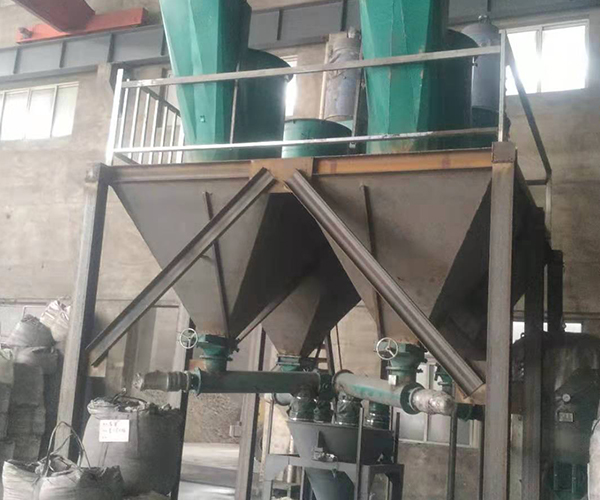Contact: Manager Qu
Phone: +86 15330915520
Contact: Manager Liu
Phone: +86 13464791403
Address: Dashiqiao City, Liaoning Province
The durability (thermal shock resistance, slag resistance, and erosion resistance) of MgO-Cr2O3 bricks used to increase the price of magnesia-chrome bricks at the slag line of refined steel tanks is consistent with the properties of secondary spinel in the bricks (the amount of production) , Size and distribution) Most domestic and foreign researchers have confirmed that the formation of secondary spinel in bricks is related to brick-making raw materials, additives and brick-making technology:
(1) The number of secondary spinels directly combined with magnesia-chrome bricks increases with the increase in the proportion of chromium ore (or Cr2O3 content) in the ingredients; the number of secondary spinels with recombination/semi-recombination magnesia-chrome bricks increases with fusion Magnesium chromium sand R2O3 (Cr2O3, Al2O3 and Fe2O3) total increased, Fe2O3 content in R2O3 decreased and Al2O3 content increased.
(2) When the specific surface area of the fine powder in the magnesia-chrome brick ingredients reaches 5-6m2/g, the secondary spinel is the most produced.
(3) When the firing temperature of directly bonded magnesia-chrome brick is above 1700℃, secondary spinel with self-crystallization characteristics can be observed; the size and quantity of secondary spinel will increase with the further increase of firing temperature , When the firing temperature is increased to 1800°C, the secondary spinel generation amount reaches 6% (volume fraction).

Chromium oxide is one of the main components of magnesia-chromium refractories. Appropriate addition of chromium oxide with high purity and small particle size to magnesia-chromium refractories has the following three aspects:
(1) Increase the direct binding rate
When the content of Cr203 in periclase increases, the dihedral angle between silicate melt and periclase increases. This principle also leads to silicate and magnesia-chromium spinel compared with silicate and silicate. The wettability between the magnesia-iron spinels is worse; this phenomenon also causes the silicate to be distributed only in the form of islands between the magnesia-chromium spinels, and the direct bonding in the magnesia-chrome brick body also increases.
(2) Improve strength
During the sintering process, the periclase solid solution in the magnesia-chromium refractory material has the dissolution of spinel during the re-dissolution of the silicate. The re-dissolution phenomenon, because their crystal structure is similar, spinel can be in the periclase crystal A large number of secondary spinel is formed around, which improves the strength of the product and improves the slag resistance; and adding high-purity small particles of chromium oxide to the magnesia chrome brick can promote the formation of spinel and promote the secondary spinel Formation.
(3) Increase slag viscosity
When the magnesia-chromium refractory contains more chromium oxide components, due to the low chemical activity of the chromium oxide components, when chromium oxide is present in the slag, the viscosity of the slag component increases. Magnesia-chrome bricks are usually used to produce magnesia-chrome spinel brick products. The main raw materials are magnesia, chrome ore, and synthetic magnesia-chrome sand, sometimes with a small amount of additives.
Sintered magnesia and fused magnesia with different MgO mass fractions (generally greater than 89%) are matched with refractory chrome ore, chromium concentrate, sintered or fused magnesia chrome sands with different Cr2O3 mass fractions (sometimes with a small amount of added Chrome green), produces many kinds of magnesia-chromium products. Fused recombined (semi-recombined) magnesia chrome bricks: usually people call magnesia chrome bricks made of fused magnesia chrome sand as recombined magnesia chrome bricks, while products with part of fused magnesia chrome sand are called semi-recombined Combined with magnesia chrome bricks. Starting from the direct combination of high-temperature crystal phases of the microstructure, recombined and semi-recombined magnesia-chrome bricks are directly bonded bricks with a higher direct bonding rate.
Due to the direct combination of magnesia chrome bricks and recombination (semi-recombination) magnesia chrome bricks, they have the characteristics of low impurity content and high temperature (ultra-high temperature) firing. Such products are also called high temperature firing (ultra high temperature firing) magnesia chromium Brick. The use of synthetic magnesia chrome sand is the technological basis for the production of recombined and semi-recombined magnesia chrome bricks. Direct bonding and secondary spinelization are the theoretical basis for the production process of magnesia-chromium refractories. The so-called secondary spinel is a spinel that is formed by high temperature treatment or chemical reaction and has a different composition from the original chrome ore. There are three main types:
(1) Crystal interstitial spinel-liquid phase crystallization.
The silicate phase in magnesia-chrome bricks mainly comes from gangue in chrome ore. The distribution of gangue in chrome ore is not uniform, so the distribution of the liquid phase formed after melting is also difficult to be uniform, and it will be locally enriched. After the chromite surface is dissolved in the liquid phase, most of the re-precipitated secondary spinel is euhedral.
(2) Transitional composition of spinel.
Transition composition spinel refers to the reaction zone formed between chrome ore or spinel and periclase. It is a transition zone with a gradual composition. Such reaction zone has a great contribution to direct bonding, and some parts realize interphase "welding" , Some showed microcracks.
(3) Desolubilization spinel.
The desolvent phase in the periclase crystal is the third form of spinel, which has no effect on the direct combination of phases, but has an important effect on changing the properties of the periclase solid solution, which can improve the resistance to acid media; improve the resistance Thermal shock and toughness magnesia chrome brick manufacturer